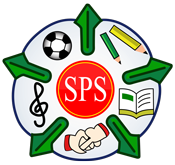English – Presentation
Subject Key Objective Progression & Development by Year Groups
The following is a guide to help you understand your child’s progression through school.
All lessons are differentiated. This means teachers plan activities that enable the objective to be learned by all children including those who will find the objective challenging, those children who with hard work will secure good progress and those children who can tackle extra stretch and challenge in this subject.
Intent, Implementation and Impact
The curriculum is designed with our pupils and the Swinemoor community in mind.
It enables children to access and enhance their understanding of their home, their town and the wider community, developing their cultural capital and giving them opportunities and choices about their future and their impact as they progress through their school career and beyond.
This will help them become successful members of modern British society, preparing them for the challenges and opportunities.
English – Presentation

EYFS: “Write recognisable letters, most of which are correctly formed.”
KS1: “Write all letters in the correct size, orientation and relationship to one another whilst using strokes needed to join but understand which letters are best left unjoined.”
KS2: “Pupils write with speed, accuracy and fluency having developed and mastered their own style of handwriting.”
EYFS:
Letter name (T1)
Lower case (T2)
Capital letter (T2)
KS1:
Joins (T2)
Ascender (T3)
Descender (T3)
KS2:
Consistency (T2)
Legibility (T3)
Print (T2)
Children may demonstrate an understanding of the importance of handwriting using cursive script, connecting with the line and joining accurately in their own writing. They may also be aware of the different fonts that are used in published resources.
Children will increasingly develop the skill of writing in a cursive style that they have made their own. They may also be able to recognise handwriting style in the manuscripts of famous writers from history, especially whilst using printing for activities such as map annotation.
What will be made, produced, performed, or published?
Children will demonstrate their understanding of how to write using a joined, cursive style. Regular letters will be written to home that will illustrate children’s progress in handwriting. There may be annual handwriting competitions undertaken.
What knowledge will the children have embedded?
Children will be able to be able to write with fluency and speed whilst, over time, developing a style of their own. This will help them to communicate their thoughts and feelings with greater security of spelling, punctuation and grammar. They will understand how different styles of handwriting are appropriate for different writing purposes and will adjust their style accordingly.
What retention may be demonstrated?
Here are some example questions that may be used to assess children’s understanding.
EYFS: Write the letter ’c’. Write a capital letter ‘A’. Write a lower-case ‘a’. Write your name.
KS1: Show me some letter joins that you have learned. How do you join letters with descenders?
KS2: In what ways do you make sure your writing is legible? What things do you try to keep consistent in your handwriting? When would you print rather than join your writing?
English – Presentation – Primary Curriculum
Presentation – Foundation stage:
To begin to form letters correctly, holding a pencil properly.
Presentation – Year 1:
To form capital letters correctly. To form lower-case letters in the right direction.
Presentation – Year 2:
To form all letters the correct size. To start using some diagonal and horizontal strokes needed to join letters.
Presentation – Year 3:
To use the diagonal and horizontal strokes needed to join up handwriting.
Presentation – Year 4:
To use joined-up handwriting with increased legibility and consistency.
Presentation – Year 5:
To maintain legibility and fluency of joined-up handwriting throughout a written piece.
Presentation – Year 6:
To write at speed, whilst maintaining legibility and fluency of joined-up handwriting.
Presentation – Mastery:
To use joined-up handwriting and formal printing style appropriately.

This collection of short films and resources will help you understand your child’s progression through school.
The curriculum film resource has been broken down by subject area initially and then by topic area.


